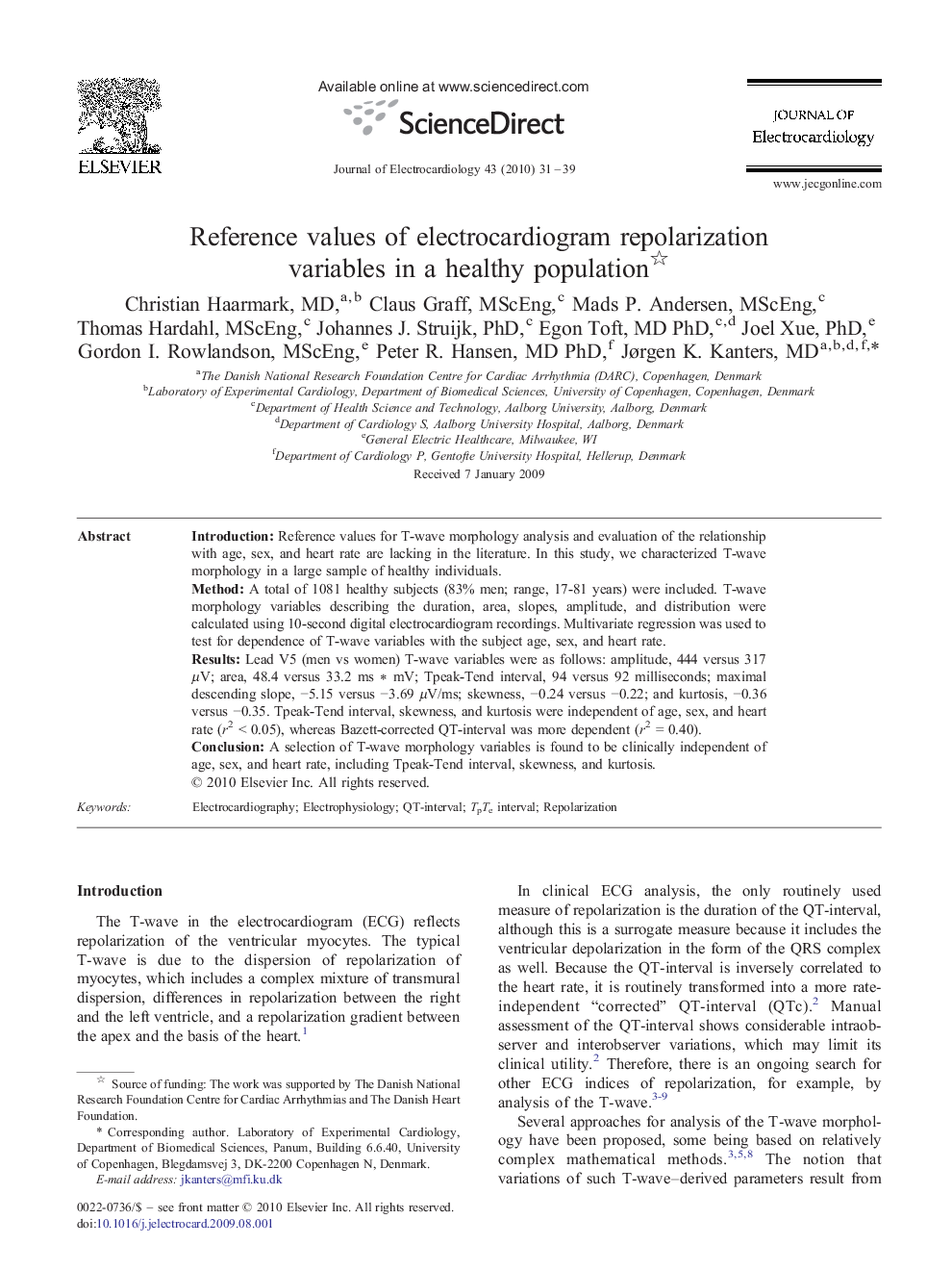| Article ID | Journal | Published Year | Pages | File Type |
|---|---|---|---|---|
| 2968502 | Journal of Electrocardiology | 2010 | 9 Pages |
IntroductionReference values for T-wave morphology analysis and evaluation of the relationship with age, sex, and heart rate are lacking in the literature. In this study, we characterized T-wave morphology in a large sample of healthy individuals.MethodA total of 1081 healthy subjects (83% men; range, 17-81 years) were included. T-wave morphology variables describing the duration, area, slopes, amplitude, and distribution were calculated using 10-second digital electrocardiogram recordings. Multivariate regression was used to test for dependence of T-wave variables with the subject age, sex, and heart rate.ResultsLead V5 (men vs women) T-wave variables were as follows: amplitude, 444 versus 317 μV; area, 48.4 versus 33.2 ms ⁎ mV; Tpeak-Tend interval, 94 versus 92 milliseconds; maximal descending slope, −5.15 versus −3.69 μV/ms; skewness, −0.24 versus −0.22; and kurtosis, −0.36 versus −0.35. Tpeak-Tend interval, skewness, and kurtosis were independent of age, sex, and heart rate (r2 < 0.05), whereas Bazett-corrected QT-interval was more dependent (r2 = 0.40).ConclusionA selection of T-wave morphology variables is found to be clinically independent of age, sex, and heart rate, including Tpeak-Tend interval, skewness, and kurtosis.
